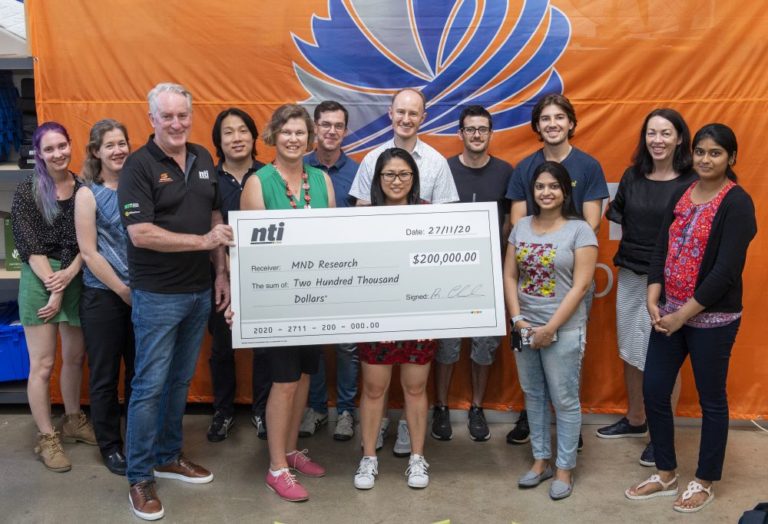Treasurer Frydenberg opened his speech by saying ‘The Great Depression and two World Wars did not bring Australia to its knees, neither will COVID-19’.
While this has not been unexpected, the Coalition is relying on job growing policies to drive the post-COVID economy, encouraging people to reskill, small businesses to invest in people and equipment while ensuring people have more money in their pockets to reinvest into the economy.
Personal and business tax cuts round out the major announcements, with significant spending in infrastructure, health and manufacturing also announced.
October’s Budget signals the first of three major economic updates to be presented by the Treasurer in the next eight months, with a traditional Mid-Year Economic and Fiscal Outlook (MYEFO) scheduled for mid-December and the 2021/22 Budget locked in for May 2021.
Working through key portfolio areas, we have highlighted big-ticket items and critical promises to ease your navigation of a content-heavy time in the election cycle.
A copy of the Treasurer’s 2020 Federal Budget speech can be found here.
HEALTH
COVID-19 has brought the Health portfolio into sharp focus and the 2020/21 Budget continues to expand on the Coalition’s commitment to ensuring Australian’s are healthy during uncertain times.
Mental health was identified by the Treasurer as an area of particular focus along with ensuring supply of personal protective equipment and a future COVID-19 vaccine.
Key announcements include:
- $16 billion as part of the Government’s ongoing health response to COVID-19 including $808 million for the acquiring of a COVID-19 vaccine through COVAX.
- the New Medicines Guarantee, ensuring that all new medicines are listed with uncapped funding.
- $5.7 billion for mental health including increased funding for psychiatric services.
- $1.6 billion for a further 23,000 additional home care packages.
INFRASTRUCTURE, REGIONAL DEVELOPMENT AND CITIES
One of the two pillars of Treasurer’s Budget, infrastructure spending has been brought forward to ensure that there are enough bridges, roads and rail for the Morrison Government’s ‘Road to Recovery’.
Key announcements included:
- Expansion of the 10-year infrastructure pipeline equating to $14 billion for new and accelerated projects, including $7.53 billion in national transport infrastructure to boost the economy, deliver safer roads and create jobs.
- In NSW, $2.7 billion in road and rail projects where relevant.
- In VIC, $1.1 billion in road and rail projects where relevant.
- In QLD $1.3 billion in road and rail projects where relevant.
- In SA, there will be $625.2 million in road and rail projects where relevant.
- The NT will get $190 million in road and rail projects where relevant.
- In TAS there will be a $359.6 million in road and rail projects where relevant.
- The ACT will get $155.3 million in road and rail projects where relevant.
- WA will get $1.1 billion in road and rail projects where relevant.
- $355.9 million for additional aviation support.
- $327.5 million for Perth City Deal.
- $74.8 million for Darwin City Deal.
- $2 billion over two years for minor scale road safety projects.
- $1 billion over two years for the extension of the Local Roads and Community Infrastructure Program.
- $2 billion to assist farmers who have been affected by drought and bushfires.
JOBS, SKILLS AND EDUCATION
Building upon the JobMaker package and Minister for Education, the Hon Dan Tehan MP’s changes to university education, jobs formed one of the Government’s two key pillars for the road to recovery.
Key announcements included:
- $240 million to encourage female workforce participation including: new cadetships and apprenticeships for women in science, technology, engineering and mathematics, job creation and entrepreneurialism, and women’s safety at work and at home.
- 50,000 new higher education short courses in agriculture, health, IT, science and teaching.
- 12,000 new Commonwealth supported places for higher education in 2021.
- 2,000 indigenous students through the Clontarf Foundation to complete Year 12 and pursue further education or find employment.
INDUSTRY, INNOVATION AND ADVANCED MANUFACTURING
First announced by the Prime Minister, the Hon Scott Morrison MP, last Thursday at the National Press Club, industry and advanced manufacturing has been identified as a key aspect of Australia’s economic recovery.
In addition, there have been further announcements on the Research and Development Tax Incentive as well as funding for the CSIRO.
In addition, this week also saw:
- $1.3 billion manufacturing package, focussing on six key manufacturing priority areas: food and beverage, resources and minerals, medical products, clean energy, defence industry and space industry.
- $2 billion for additional Research and Development tax incentives – removing the cap on refunds, lifting the rate and rewarding those businesses that invest the most.
- $459 million in additional funding to the CSIRO.
FINANCE AND TREASURY
In addition to the infrastructure and jobs packages, the Government announced measures to ensure that more money remains in the pockets of Australians.
This also included an extension to the Instant Asset Write-Off to ensure small businesses can purchase new and upgrade existing equipment.
Key announcements included:
- Stage 2 of the previously legislated tax cuts, extending the 19% bracket from $37,000 to $45,000 and the 32.5% bracket from $90,000 to $120,000.
- $26.7 b for an extension of the Instant Asset Write-Off for business with turnover <$5 billion.
- Establishment of ‘YourSuper’ designed to reduce waste in the superannuation industry and saving Australians $17.9 billion.
TOURISM AND INVESTMENT
Tourism and Trade took a backseat in this Budget, but the industry was not forgotten, with a specific focus on regional tourism.
Key announcements included:
- $233 million to upgrade facilities in Uluru, Kakadu, Christmas Island and Booderee National Park.
- $350 million to support regional tourism to attract domestic visitors back to the regions and a further round of the Building Better Regions Fund.
ENERGY AND THE ENVIRONMENT
On 22 September, the Hon Angus Taylor MP, announced that five technologies will receive prioritized support under its Technology Roadmap.
Key announcements included:
- $18 million will be spent via the Clean Energy Finance Corporation, the Australian Renewable Energy Agency, the emissions reduction fund and environmental grants. The targeted government investment will focus on clean hydrogen energy storage, low-carbon steel and aluminium, carbon capture and storage and soil carbon.
- $52.9 million package to tap into Australia’s gas supply.
- $1.5 billion over four years to sustain and encourage local manufacturing and private investments including clean energy.
- $40 million funding package and $20 million will be invested in coastal ecosystems under a federal government COVID economy recovery plan.
SOCIAL SERVICES
This week saw the final sitting week before the release of the Federal Budget on 2 April 2019, with a formidable round of Senate Estimates defining the tone on the hill.
Key announcements included:
- $2.6 billion over three years for two $250 payments to be made from November 2020 and early 2021 for recipients of the age pension, Disability Support Pension, Carer Payment, Family Tax Benefit, Carer Allowance, Pensioner Concession Card, Commonwealth Seniors Health Card Holders, eligible Veterans Affair’s payment recipients and health cardholders.
- $15.6 billion in 2020-21 due to the relaxation of the JobKeeper eligibility requirement, with companies only having to prove their turnover was sufficiently effected in the previous quarter.
- $4 billion dollars over three years, $200 dollars per week if they hire somebody between 16-29 and $100 per week if they are between 30-35. Employees hired via the subsidy must increase the overall employment of any given business.
- $2 billion over five years to relax the JobSeeker partner income test taper
- $798.8 million for quality and safeguards commission over four years, supporting half a million patients on the NDIS.
DEFENCE AND HOME AFFAIRS
With the Australian Government reaching and exceeding its goal of 2 per cent of GDP assigned to the 2020 Defence Strategic Update, Defence took a back seat during this year’s Budget:
Key announcements included:
- $1.5 billion over four years to sustain and encourage local manufacturing and private investments including in defence and space. Defence was also one of the advanced manufacturing areas identified by the Prime Minister as an industry of critical strategic growth.
- The acquisition of new capabilities represents 40% of the total defence budget in 2020-21, headlined by the Navy’s construction of the Hunter Class Frigates and Attack Class submarines.
AGRICULTURE AND WATER
Part of the Government’s broader Infrastructure and Regional Development plan, funding commitments for further agriculture and water infrastructure were made in this year’s Budget.
Key announcements included:
- $2 billion in concessional loans to help farmers overcome the devastating drought
- $350 million to support regional tourism to attract domestic visitors back to the regions and a further round of the Building Better Regions Fund, and
- $317 million for Australian exporters to continue to access global supply chains, building on the 80,000 tonnes of exports the government have already helped get to market.
- $567 million for the Wyangala and Dungowan dams with our investment totalling.
- $2 billion in new funding to build vital water infrastructure across the country as part of the national water grid including dams, weirs and pipelines.
CROSS PORTFOLIO
Other key announcements which cross multiple portfolios included:
- $201.5 million over four years for the previously announced 2020 Cyber Security Strategy as well as $128 million over four years for AFP, Home Affairs and AUSTRAC.
- $238 million over the first four years and $39 million in subsequent years for the Australian Nuclear Science and Technology Organisation.
- An additional $129 million for the Relief and Recovery Fund to tackle projects of importance.
- $796 million for the Digital Business Plan to encourage digital transformation in the private sector.
[/vc_column_text][vc_zigzag][/vc_column][/vc_row][vc_row][vc_column][vc_column_text]
THis budget analysis and overview Was PROVIDED BY THE TEAM AT NEXUS PUBLIC AFFAIRS.
[/vc_column_text][/vc_column][/vc_row]





